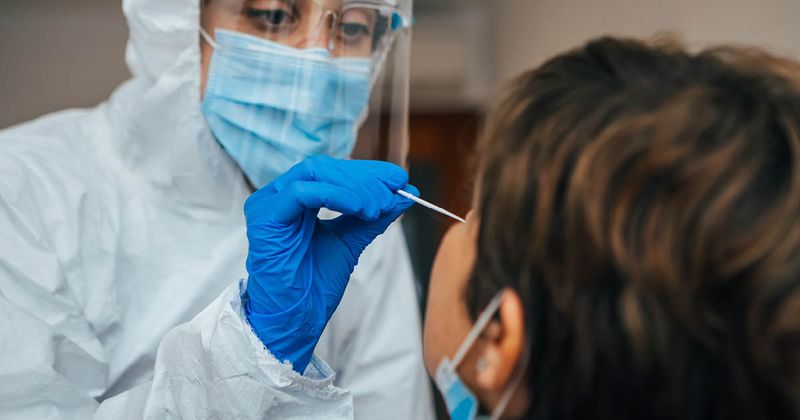‘We have the tools to protect each other’: White House unveils new COVID-19 plan
On the heels of President Joe Biden’s State of the Union address, his administration announced a new National COVID-19 Preparedness Plan, which includes a test-to-treat initiative.
“Two years ago, we had limited tools to protect ourselves — mask, isolation and social distancing,” Jeff Zients, the White House COVID-19 Response Team coordinator, said during a press briefing. “But all of that’s changed. Today, we have all the tools we need to protect each other and treat COVID-19.”

As mentioned in the address, the Biden Administration will establish “one-stop test-to-treat” locations at pharmacy-based clinics, health centers, long-term care facilities, and Veteran Affairs facilities, nationally.
The initiative will “provide individuals access to testing and treatment for free, all in one stop,” Zients said. “Hundreds of one-stop sites will open across the country this month.”
Three other key components of the plan will focus on:
- preparing for new variants;
- preventing economic and school shutdowns; and
- continuing to vaccinate the world.
To prepare for new variants, the administration has enhanced the country’s collection, production and analysis of data, with expanded case reporting across all 50 states. Additionally, the CDC will continue to enhance its wastewater surveillance system, which became public last month.
“If a new variant emerges, we’re able to catch it earlier, faster, and with greater precision,” Zients said. “When we do detect a new variant, we’ll be ready to respond quickly. We have a COVID-19 variant playbook to rapidly assess a variant’s transmissibility, severity, and its potential impact on vaccines and treatments.”
The plan also calls for stronger emergency response infrastructure, led by FEMA and HHS, to facilitate mass vaccination sites and surge testing sites, if needed.

“CDC is working with state, county and city jurisdictions to transform independent, local surveillance efforts into a robust, sustainable national system,” CDC Director Rochelle P. Walensky, MD, MPH, said during the briefing.
To prevent economic or school shutdowns, the administration will provide a “Clean Air in Buildings” checklist to improve indoor ventilation and air filtration. Technical assistance will also be provided to encourage schools, public buildings and state, local and tribal governments to make improvements.
Funding for improved ventilation will come from the American Rescue Plan, the plan states online. The checklist will be provided through the Environmental Protection Agency.
The final point of the plan focuses on providing COVID-19 vaccines to individuals around the globe. Currently, the United States is committed to donating 1.2 billion vaccine doses, and more than 475 million have already been delivered to 112 countries.
“Clearly, the virus does not recognize national borders,” Zients said. “To protect the American people and our economy, we must defeat the virus everywhere. That means vaccinating Americans, and vaccinating people around the world. It’s both the right thing to do and it’s in our own national interest.”
The White House said in a statement that it will work with Congress to secure funding for the plan.
National Institute of Allergy and Infectious Diseases Director Anthony S. Fauci, MD, made it clear that although government agencies have made progress, the work is not done.

“The scientific community continues to conduct vital research to learn more about SARS-CoV-2 and the body’s immune response, both during and following infection, so that we may adapt and improve vaccines and treatments” Fauci said.
“In addition, we are working to understand better, prevent and intervene in long COVID. We know that we will have to contend with COVID-19 at some level for some time to come. Thus, we will continue to invest in research to develop better treatments and next-generation vaccines — ones that provide better and longer-lasting protection.”


